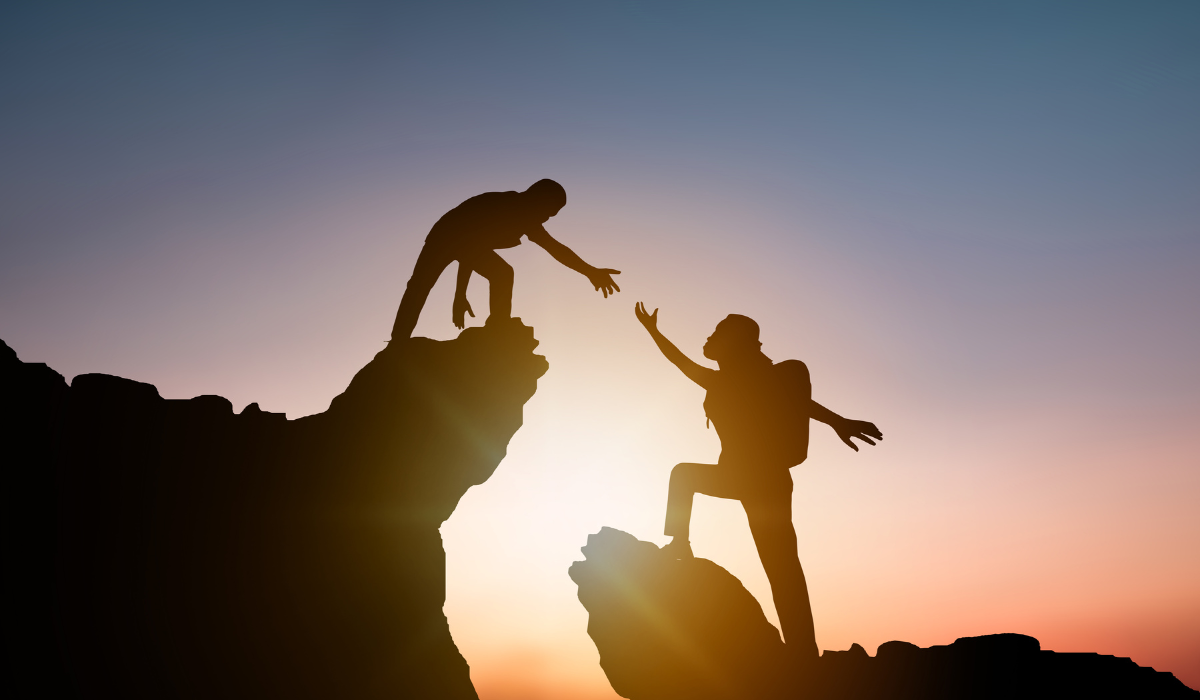Would You Jump In and Do Something If You Saw a Need? Here’s How One Woman Answered That Question
The first time I taught swimming was at Special Olympics Summer Camp, when it was a fledgling organization in the backyard of founder Eunice Shriver. I was about 12 years old, and Ms. Shriver recruited all her children’s friends as counselors.
Ms. Shriver led me toward the pool. I told her I’d never taught swimming and she jumped in, signaled for me to follow, and told me, “There’s always a first time!”
That’s how I found myself teaching Special Olympians to swim. Later, I taught swimming at a summer camp on a frigid glacier lake in New Hampshire. And recently, two friends from college urged me, as Ms. Shriver did many years ago, to jump into a pool and do something when I learned about a need.
As I chatted with these friends, Black men I’d met in college, we were reminiscing—and I was looking for some perspective on what it was, and is, like to be Black in this country.
“Remember that mandatory PE class we took in college?” one of my friends asked. “Could you swim?”
“Yes,” I replied.
“Well, we couldn’t,” my other friend said. “So, from the first day of class, we were segregated into two lines: Those who could swim laps—the white kids—and those who couldn’t, who were mostly Black.”
Both men admitted they grew up terrified of the water. Both men had parents who told them to never go near the water or they would drown.
“I can’t imagine,” I sputtered.
“Yeah, it was cultural,” one of my friends said. “We were allowed into the public pools—we just didn’t know how to swim. Neither did our parents. In fact, most people of color where I grew up in Atlanta still can’t swim.”
I didn’t tell him this, but I didn’t believe him. Sure enough, a quick Google result turned up numerous reports that many Atlanta adults cannot perform basic tasks of floating and other swimming skills. As a result, the Metro Atlanta YMCA has a large commitment to teaching Aquatics.
I laughed nervously and said, sheepishly, “I was a swim instructor and lifeguard when I was 17. I guess I could help teach swimming.”
“Then get off your ass and do it!” my friend nudged.
Six months later, I was certified to teach swimming, and I told the Aquatics director at my local YMCA that I’d prefer to teach adult beginners. She was thrilled, as most instructors prefer teaching kids.
These days, I teach almost all people of color from about ages 25-45. I start by getting my students to fully submerge under water and exhale bubbles. Some confide in me about a traumatic incident around water that the need to overcome. One told me he wanted to learn to swim before he had children to avoid embarrassment. Most Black women wear bathing caps to protect their hair and hairstyles, just like I do. My students with elaborate styles or long braids explain that their hair is a large part of their identity. Chlorine and water messes with it—just like it messes with my dyed hair.
As I continue to break down my students’ fear of water and nurture simple water safety skills—things like floating and treading water, jumping in the deep end, and getting to the pool edge—it’s clear to see how we are all more similar than we are different.
My students respond to the languages of love just as I do. I give words of affirmation and appreciation to my students, and they give them to me after my instruction. My students tell me about their education, work, and families. We talk about how it’s an effort to get to the “Y” after a long day, change clothes, and enter an indoor pool. We are all body conscious in our bathing suits. I’ll never forget when two students asked me about white women and body image. “Why do you think I’m wearing an oversized “Y Instructor” t-shirt in the water?” I replied. We all laughed.
Teaching Black adults to swim has prompted me to think differently about race. I empathize with fear, and for feeling disenfranchised over not having something I have always taken for granted—the ability to float, and swim, enjoy being by a pool or lake, and to get to safety if in danger.
My students may not be ready to swim in an ocean just yet, but they will have the confidence to dabble their toes in the waves or build a sandcastle close to the powerful water. We really aren’t that different. What I know now is this: On the surface and in the deep end, we have much goodness and love to share.
And for those of us who can do something but haven’t yet, there’s always a first time!
What will you do to jump in?




